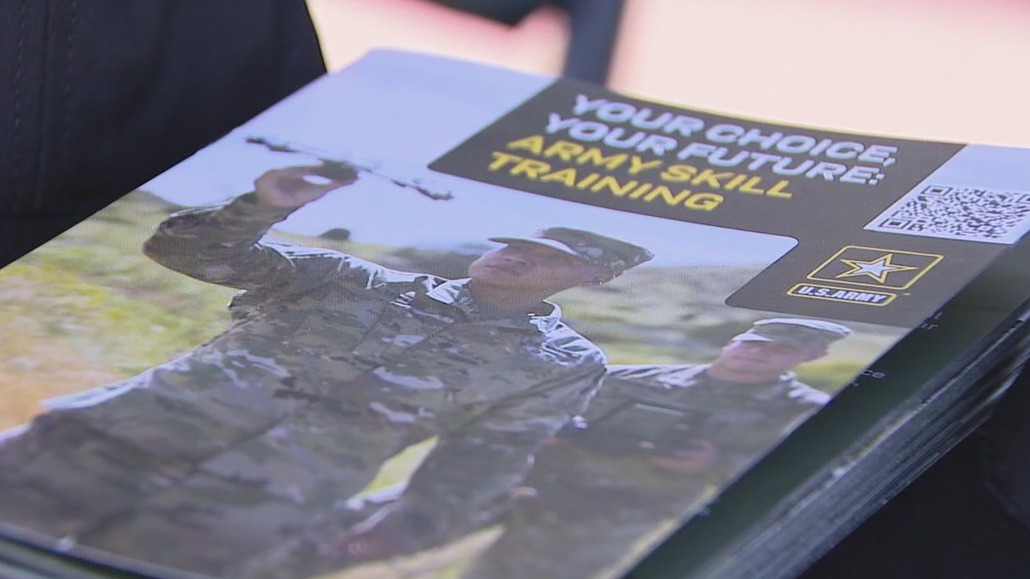Arizona
Man dead after possible self-defense shooting in Phoenix
/cloudfront-us-east-1.images.arcpublishing.com/gray/CTUNUPK2JNHRRFWZUWSIWMZFJ4.jpeg)
PHOENIX (3TV/CBS 5) — A man is dead after a possible self-defense shooting in Phoenix on Friday night.
Phoenix police responded to reports of a shooting around 7:30 p.m. near 16th Street and Cambridge Avenue, and when officers arrived, they found a man with a gunshot wound. A man was detained at the scene who was believed to have been involved in the shooting. The injured man was taken to the hospital, where he later died.
Investigators are still working to learn the circumstances around the shooting but believe the shooter may have acted in self-defense. The man was released, pending the results of the investigation.
See a spelling or grammar error in our story? Please click here to report it and include the headline of the story in your email.
Do you have a photo or video of a breaking news story? Send it to us here with a brief description.
Copyright 2023 KTVK/KPHO. All rights reserved.

Arizona
Arizona is poised for further momentum after TSMC, Intel and other semiconductor victories
Arizona needs tech workers. Here’s how to get more of them
Arizona’s growing semiconductor industry needs thousands of workers. Tarji Borders explains how she got the training to land a job at Intel.
Arizona Republic
Arizona, over the past three years, has scored some huge victories in luring major semiconductor investments to the state, including a major Intel Corp. expansion in Chandler and the construction of three new factories in north Phoenix by Taiwan Semiconductor Manufacturing Co.
Could all this be the prelude to an even bigger second act?
“There is critical mass — that’s the opportunity we have now in Arizona,” said Brian Harrison, president of TSMC Arizona. “We have a great opportunity to do even more in the next 10 years.”
Harrison described how the company’s factories or fabs in Taiwan have become hubs around which chemical suppliers, tool-equipment makers and other businesses have clustered. His comments came during a “Silicon Desert” forum hosted by EMD Electronics, which supplies equipment and provides testing services to semiconductor customers in Arizona and elsewhere.
The demand for semiconductors remains on a growth track, fueled by consumer products such as cellphones and computers, automobiles, data centers, and pretty much every other modern electrical device or industry. Artificial intelligence has provided new impetus.
A rising percentage of chips now are manufactured abroad, mainly in Taiwan, and reversing that trend has been the thrust of the CHIPS & Science Act of 2022. Under that legislation, the U.S. Commerce Department so far this year has awarded up to $8.5 billion in grants to Intel and $6.5 billion to TSMC, along with $162 million to Chandler-based Microchip Technology and other recipients.
Semiconductor manufacturers are using that money, combined with pledges for billions of dollars more in low-rate federal loans, to leverage their own investments.
TSMC’s planned Arizona investments have risen to $65 billion, along with $20 billion in recent new commitments by Intel. Those have helped to boost total semiconductor investments in Arizona to more than $100 million over the past four years, said Sandra Watson, president and CEO of the Arizona Commerce Authority and another speaker at the forum hosted by EMD Electronics, a business of German science and technology giant Merck KGaA.
Planning began before passage of key federal legislation
Arizona has fared well lately in this regard partly because of advance planning, Watson said. In 2021, a year before the CHIPS Act was enacted, the Commerce Authority brought together more than 50 industry leaders from various states, along with educational institutions such as Arizona State University and others, to develop a strategy. “We were able to establish a very strong plan,” Watson said, with collaboration the key.
Harrison echoed that sentiment and noted that TSMC considered many other locations in various states for its factories or fabs. Many of these other places had “different factions with their own vague agendas,” he said, rather than a unified gameplan like Arizona. “Everyone has water and roads,” he quipped.
More Arizona-focused technology announcements will be forthcoming, said Watson and Sean Fogarty, vice president of international business development at the Greater Phoenix Economic Council.
“We have a healthy pipeline of prospects” that are considering expansion here, with foreign businesses representing about one-third of those companies, Fogarty said.
Arizona already features a deep supplier base, a pro-business environment, favorable tax policies and an expanding workforce, Fogarty said. All that complements an educational system that is ramping up to funnel workers into the industry, from engineers at Arizona State University and the University of Arizona to technicians receiving training through the Maricopa Community College system and other programs. In addition, Arizona continues to add population, with many of the newcomers in the prime 18-to-44 working-age group, Fogarty said.
The power to make chip-expansion happen
Another critical consideration is the electricity to power these new industrial complexes, as well as related industries such as data centers, of which metro Phoenix now has one of the highest concentrations in the Western Hemisphere.
The EMD Electronics conference included assurances from both of the major electric utilities operating around metro Phoenix that power will be available when expansions get up and running.
“We are aggressively (adding) new resources over the next five years,” said Karla Moran, manager of economic development at Salt River Project. That includes more solar generation, mobile-home-sized batteries to store power early in the morning for release later in the day, and additional hydro capacity.
Kelly Patton, economic development manager at Arizona Public Service, said much the same. “We have prepared for this growth,” she said.
Both utility executives made the case for continuing to keep natural gas-fired plants in the mix for a while longer, despite emissions that make them targets for criticism from environmental groups and others. “If a monsoon hits and the solar field goes down, we can ramp up that natural gas,” Patton said.
Actually, the availability of renewable energy is another factor that gives Arizona an edge, as some companies expanding here, including Apple with its new data center in Mesa, have asked for it, Watson said.
A key factor in the Phoenix area’s success in attracting semiconductor manufacturers and other industries, she added, was ongoing efforts to keep the major utilities in the loop.
Some 54 megaprojects are in the works now across all industries, Watson said, and the Commerce Authority shares that information with local utilities. “We map out what sites they are considering so that our utilities can plan,” she said. “So the utilities know, in the next five years, where they need to be.”
While water is another critical need for the semiconductor industry, conference participants didn’t assess it as a key obstacle for Arizona, especially as manufacturers, including Intel, are striving to improve their recycling efforts. SRP, which supplies about half of the Valley’s water needs, said its reservoirs by later this spring are expected to be near full capacity.
For Arizona’s semiconductor industry, many of the “i’s” still need to be dotted and the “t’s” crossed. The giant fabs and expansion projects still need to be built, equipped and staffed with trained workers, many of whom haven’t completed or even started their educations. Suppliers need to be ready and waiting, with fewer of the supply-chain disruptions that have plagued the industry in recent years. Labor relations need to be maintained if not improved. The power and water for these complexes need to keep flowing, and partnerships strengthened.
But the infrastructure and other foundations have been laid and Arizona is in a good position for expansion, said Cori Masters, a senior semiconductor research analyst based in the Valley for Gartner.
“Now’s the time for ramping,” she said.
Reach the writer at russ.wiles@arizonarepublic.com.
Arizona
U.S. Army makes a push to recruit in Arizona

Over the last few weeks, recruiters have made a big push in the Valley as U.S. Army Staff Sgt. Benjamin Mitchum says the Army can provide stability for a young family. FOX 10’s Steve Nielsen has the story.
Arizona
Arizona baseball shakes off poor start to finish sweep of Stanford

Having clinched another Pac-12 series on Saturday night, as well as a berth in the conference tournament, a day game finale had all the makings for a potential letdown. And early on it looked that way for Arizona.
Bad at-bats at the plate were compounded by multiple mental errors in the field, most in one inning as Stanford took a 2-0 lead in the top of the 2nd inning. That prompted Chip Hale to make a mound visit, something he normally only does when changing pitchers.
“It wasn’t very friendly,” Hale said when asked the gist of his conversation with his infield. “I was just upset. We do a lot of things to get you ready for the game and it just looked like guys weren’t ready.”
But despite that shaky start, Arizona got itself composed and ended up finishing off another series sweep.
A 6-run bottom of the 6th, combined with solid pitching from Cam Walty and two relievers, gave the Wildcats a 7-2 win over Stanford on Sunday afternoon at Hi Corbett. It was their fifth series sweep of the season, fourth in Pac-12 play, and maintained its 2-game lead on Utah heading into next weekend’s trip to Salt Lake City.
Arizona (29-17, 17-7) won its 10th straight conference home game despite managing only a run on three hits over the first five innings against Cardinal starter Gavin Dugan. The tide turned in the 6th when Mason White lead off with a single, stole second and went to third after Garen Caulfield reached on a throwing error.
Stanford pulled Dugan, bringing in a reliever in Joey Volchko who threw six shutout innings on Tuesday. Emilio Corona greeted him with a single to center to tie the game at 2.
It was Corona’s 15th hit during an 8-game hit streak that’s also included six walks. He walked only seven times in his first 39 games this season.
“I’m really just trusting what I’ve been working on and just kind of cleaning up some mechanical things, just trying to stay inside the ball and really just taking what the game gives me,” said Corona, who has his average back up to .280 after being as low as .214 in late March. “If it’s a walk one at-bat take your walks, if it’s a base hit take the hit. Just swinging at the right pitches, for sure.”
After a sac bunt and a pop out, freshman Andrew Cain gave Arizona the lead when he crushed a 97 mph fastball to left-center for a 2-run double. Three more Wildcats would reach after that, capped by Brendan Summerhill’s bases-clearing double to make it 7-2.
That ended a 2-for-28 skid for Summerhill, whom Hale says actually makes too much contact sometimes because he puts pitchers’ pitches into play.
“If he’d swing and miss sometimes early in the count …,” Hale said.
Walty got his conference-leading 7th win by going seven strong, allowing nine hits and walking one. The two runs he gave up were hardly his fault, either.
Stanford’s Malcolm Moore led off the 2nd with a gift double after Corona didn’t see the ball off the bat and it fell innocently between him and Summerhill in right center. And with the Wildcats employing a 4-man outfield, no one rotated to cover second base for Corona’s throw in as Moore got the extra base.
A 1-out single against the shift scored Moore, then a grounder to first should have ended the inning but when Tommy Splaine turned to throw to second he did so to the wrong infielder and no outs were recorded. A single through the right side followed, making it 2-0.
Walty would allow at least one baserunner every inning after that, including loading the bases with two out in the 7th, but each time worked himself out of his own mess.
“Walty kept us in it with really, really good pitching, kind of let the guys settle down and then they got it going,” Hale said.
Casey Hintz and Tonko Susac followed with perfect 8th and 9th innings, with Susac recording a ninth consecutive scoreless frame since getting moved to the bullpen. He’s allowed seven baserunners and struck out 16 in that span.
Arizona has its second-best record in school history after 24 conference games but is no guarantee to win the Pac-12 title. The Wildcats face their two closest challengers the final two weekends, first at Utah (30-15, 15-9) and then the regular-season finale May 16-18 at Hi Corbett against Oregon State (35-12, 14-9).
Before that, though, is one last nonconference game Tuesday at ASU. The Sun Devils took two of three in Tucson in March.
“We want to score 100 and give up zero,” Summerhill said. “We want to beat them, they will they beat us here this year. So we’re gonna go up there and play our butts off and beat them as bad as we can.”
-

 Politics1 week ago
Politics1 week agoColumbia University’s policy-making senate votes for resolution calling to investigate school’s leadership
-

 News1 week ago
News1 week agoBoth sides prepare as Florida's six-week abortion ban is set to take effect Wednesday
-

 News1 week ago
News1 week agoPro-Palestinian campus protesters face looming deadlines and risk of arrest
-

 Politics1 week ago
Politics1 week agoRepublican makes major announcement in push to grow GOP support from once-solid Dem voting bloc
-

 World1 week ago
World1 week agoBrussels, my love? MEPs check out of Strasbourg after 5 eventful years
-

 Politics1 week ago
Politics1 week agoGOP Rep. Bill Posey won't seek re-election, endorses former Florida Senate President as replacement
-

 Politics1 week ago
Politics1 week agoHouse Republicans brace for spring legislative sprint with one less GOP vote
-

 World1 week ago
World1 week agoAt least four dead in US after dozens of tornadoes rip through Oklahoma
/cloudfront-us-east-1.images.arcpublishing.com/gray/BVH25ZAF4RF3XFQYRYMUBSIGAE.jpeg)
/cloudfront-us-east-1.images.arcpublishing.com/gray/B4XRNH7LYBBMHJ5HGJLQ3NVUEM.jpg)
/cloudfront-us-east-1.images.arcpublishing.com/gray/RYY7IS77AFFSFIWS32T4NYWYR4.jpg)
/cloudfront-us-east-1.images.arcpublishing.com/gray/P4TCAZ6BURCTFJQGV4WCQSIBP4.png)
/cloudfront-us-east-1.images.arcpublishing.com/gray/UPUIVPKJSBBK7PWCSLUBN6P3WQ.jpeg)













